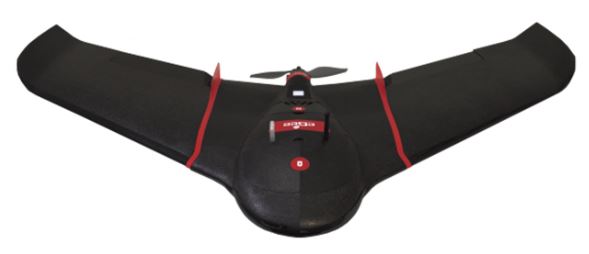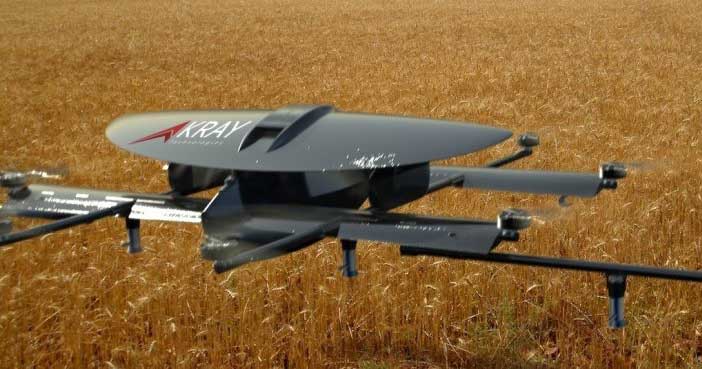Why is growing the popularity of unmanned aerial vehicles in agriculture, and what are their main advantages - we'll try to analize that in this article.
Special features of the agriculture are large areas that should be handled and the complexity of the choice of technic that should do it. For example, if there are 100 hectares of land sown with wheat (corn) and they need to be treated with plant protection products, then you will inevitably face the question of – lose some of the crops because of track from wheels or use an airplane?
In a number of farms, the field is divided by dirt roads, the distance between which depends on the size of the booms of the sprayers available in the farm. But this is only good for those who has a constant technique and land. The disadvantages of this approach are the loss of arable land under unpaved roads, by which each field must be covered.
Another problem when working with the ground is the complexity of monitoring the state of fields. In case of using of the traditional methods, then it takes a lot of time, effort and fuel. Therefore, more and more interest is attracted to the UAV, which allows in a shorter period of time, «contactless» to inspect and process a considerable area.
There are two main directions of using such equipment today. First – monitoring of the land and crops. Second – application of plant protective products. Having the aircraft equipped with a camera Parrot Sequoia, you get a device for a fairly quick assessment of significant areas. As an example, one can mention the eBee SQ drone demonstrated in the framework of the project SENSE.
Equipping the UAV with the Parrot Sequoia camera already clearly shows the purpose of this technics – monitoring the state of the photosynthetically active plant mass. For one span at an altitude of 120 meters, the apparatus provides data on a territory of 200 hectares. If the height is 2 km, then the coverage area will be 3000ha. The radio communication will be confidently maintained at a distance of up to 3 km. Based on the data obtained, it will be possible to draw conclusions about the need for the application of fertilizers or plant protection products.
Another direction of using drones is the application of plant protective products. It is too early to speak about the possibility of fertilizer application, since the carrying capacity of flying devices is not yet very high. But when it comes to the need to protect plants, UAVs can be very convenient, and existing developments on the Ukrainian market allow you to assess prospects, including from a financial perspective.
"Kray Technologies" has already signed the first contracts for the production of robotic UAVs intended for the introduction of PPP. As an example, you can order a drone Kray Protection, with estimated processing area in about 500 hectares per day.

Moving at a speed of about 110 km/h drone, independently monitors the maintenance of altitude, taking into account the relief of the ground. This allows to do the most effective and rapid introduction of herbicides (insecticides). The tank capacity is 15 liters. The work cycle of the robot includes 15 minutes of flight, then 1 minute of maintenance. Approximate time of continuous operation from one battery charge is one hour.
In addition to the high processing speed (25-50 hectares per hour), the drone is distinguished also by the smaller costs per unit area (in comparison with the airplane). In addition, due to the lower flight altitude, there will be a denser coating, without omissions areas. One more plus – the drone can handle areas beyond the reach of the airplane – located close to the forest, power line supports and other similar obstacles.
Of course, this technique has its drawbacks. Bad weather can make it difficult to use it. To use the drones, you will need specially trained personnel.
If you need to applicate liquis fertilizers on your field, you can order the service from the company «Comprehensive AgroService». Thanks to low weight of the sprayer «Vodoley» and its ultra low pressure tires, it has minimal impact on the soil. Sprayer «Vodoley» can move even on a heavily wet soil, when the technic on conventional wheels will get stuck.
In one tank can be mixed UAN, LCF, PPP. In this case, in one pass the sprayer will execute several types of processing at once – foliar feeding of plants and applicating of the selected PPP.
Spraying computer, installed on the sprayer, synchronizes the outflow rate of the working fluid with the speed of movement technics on the field. Therefore, even with fluctuations in the speed of motion (which is inevitable on corners and slopes), the outflow rate will be sustained.
Due to the GPS module, the coordinates of the technic on the field will be determined and stored in the Agrosystem's database.
Using a gadget with an Internet connection, it will be possible to estimate the density of the coverage, compliance with a predetermined rate of outflow and other aspects related to the processing of the territory. Company «Comprehensive AgroService» has considerable experience in providing services of the applicating of the UAN and plant protection products on the customer's field.